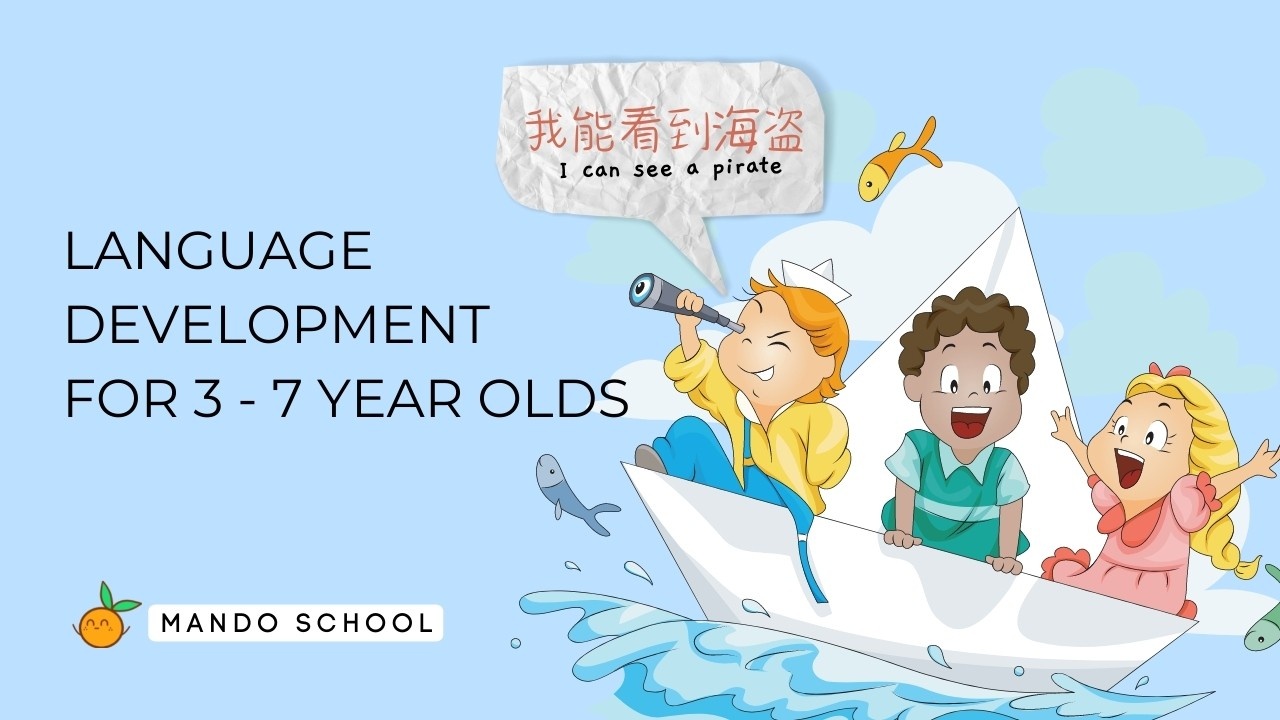
Language Development For 3 - 7 Year Olds
Sep 27, 2021Language Development For 3-5 Year Olds
Years ago, it was unthinkable that children as young as three years old could learn a second language while still learning their mother tongue. Recent research, however, indicates that our brains are more receptive to language early in life. Children have a plethora of rich, varied, and engaging opportunities to learn a language. At this age, they typically benefit from constant, enjoyable one-on-one interaction with native speakers, in contrast to adult children, who have limited time and opportunities to devote to language learning from scratch. While classrooms do define words and grammar for them, this is not nearly as effective as learning through play and authentic discovery. That is why it is encouraged for children to learn a second language.
Children between the ages of three and five learn best through play. They have not yet developed the capacity to store and evaluate facts and information; otherwise, they will become overwhelmed. Bilingual children are more aware of which language to use in the community and public places by the age of four. This demonstrates that they acquire the skills and knowledge necessary to adapt to changing environmental conditions. Additionally, they are expected to acquire a sufficient vocabulary in both languages and the ability to converse in one. Thus, they refrain from code switching during communication. The term "code switching" refers to the process of transitioning from one language to another. This is more prominent in toddlers.
Language Development For 5-7 Year Olds
By this age, monolingual children understand that a word can take on multiple meanings depending on its context. They are able to read simple stories and are beginning to comprehend riddles and jokes. This means that at this age, regardless of whether the child is monolingual or is learning a new language, they understand that different situations require different levels of comprehension.
Around this age, children begin to comprehend the fact that they are speaking two languages and are accustomed to two cultures. This is an exciting time for parents and caregivers as they observe their child's language development progress. Children should achieve the same level of proficiency as monolingual children in areas such as vocabulary, spontaneous speech, and pronunciation. By the age of six, children should be nearly bilingual. The child should be able to communicate in the second language with peers and teachers. This is the period during which all adjustments and doubts about the development will fade away. However, this development can be observed only through continued exposure to both languages. To begin, enrolling a child in a foreign language class benefits the development of cultural awareness and appreciation. Bilinguals are said to have a stronger sense of self-worth, identity, and belonging than monolinguals. Bilingual children are critical in the community because they foster a greater appreciation for diverse cultures and languages.
By Roslin S.
Stay connected with news and updates!
Join our mailing list to receive the latest news and updates from our team.
Don't worry, your information will not be shared.
We hate SPAM. We will never sell your information, for any reason.

